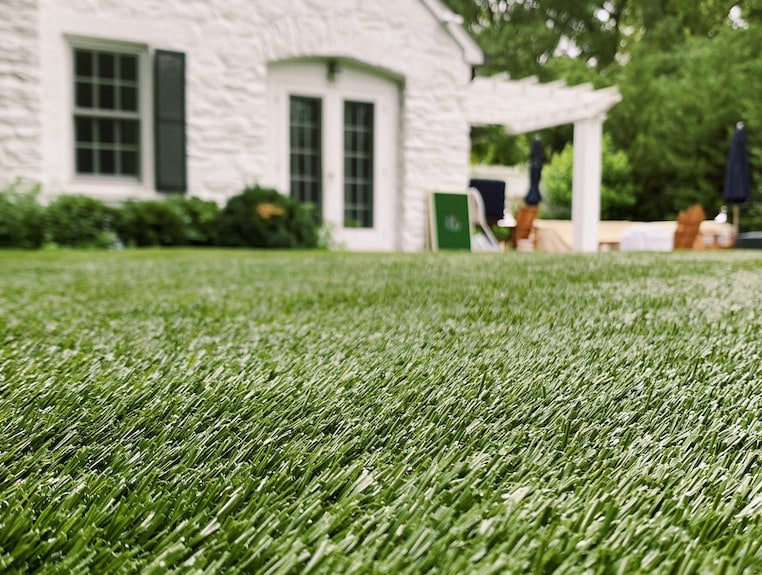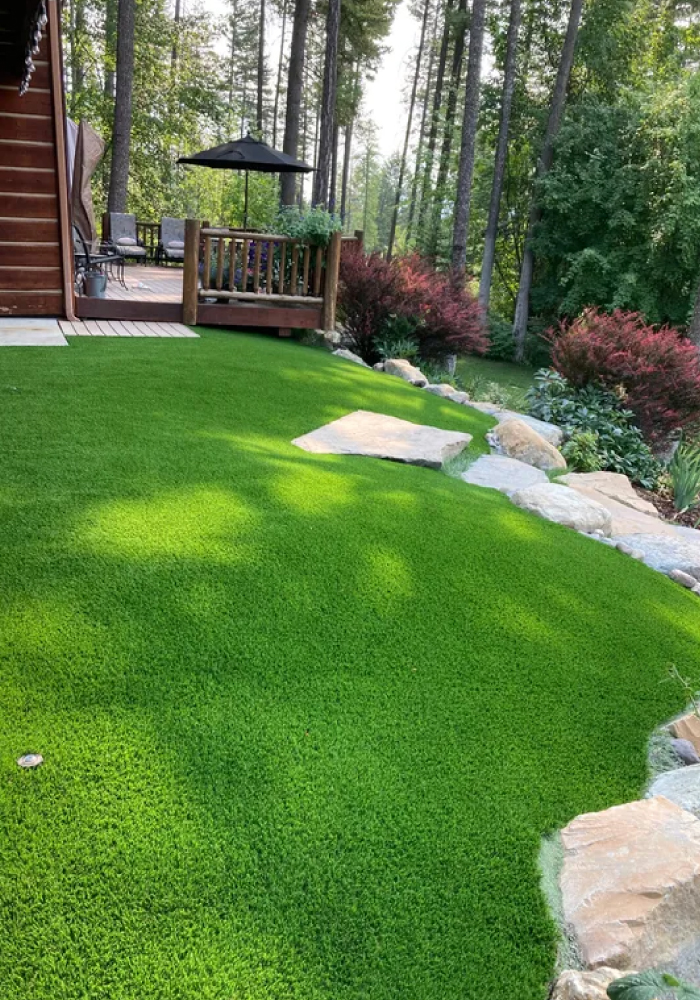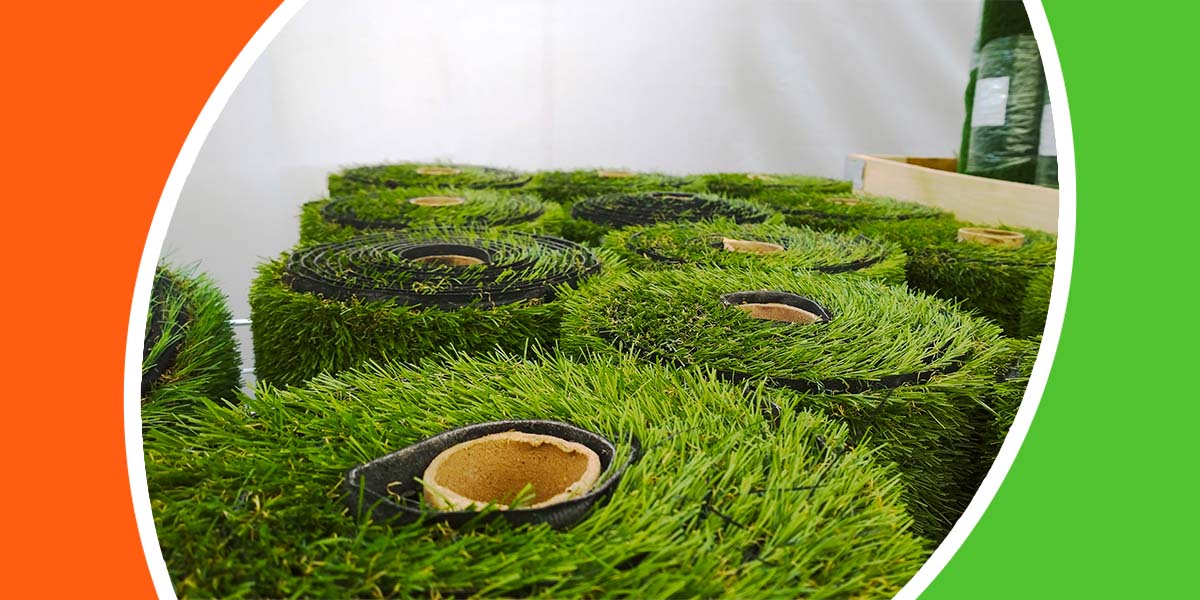Reputable Phoenix Turf Companies Providing Best Synthetic Grass Installation
Wiki Article
Look Into the Environmental Advantages of Opting for Synthetic Grass Solutions
The adoption of fabricated grass services offers a compelling chance to deal with pushing ecological difficulties. By significantly minimizing water use and minimizing the application of dangerous chemicals, these alternatives not only promote sustainable landscaping however additionally protect local environments.Water Preservation Conveniences
Among one of the most significant benefits of synthetic grass is its ability to save water. Standard lawn yards call for substantial watering, specifically in locations prone to drought or water limitations. On the other hand, fabricated lawn does not need watering, substantially decreasing the general need for water sources. This attribute is specifically advantageous in arid regions where water shortage is a pressing worry.By removing the need for routine watering, synthetic turf contributes to sustainable landscape techniques and assists mitigate the environmental effect of excessive water intake. Moreover, the preservation of water encompasses the reduction of overflow, which can result in dirt erosion and waterway air pollution.
Additionally, the installment of synthetic lawn permits districts and property owners to allocate water sources much more efficiently, focusing on necessary uses such as drinking water and farming. The change towards synthetic grass not only advertises liable water usage yet likewise aligns with more comprehensive ecological goals focused on preserving natural deposits.
As neighborhoods increasingly prioritize sustainability, the water preservation benefits of man-made grass present a compelling instance for its fostering in household and commercial landscape design jobs.
Reduced Chemical Usage
The transition to synthetic grass dramatically lowers the reliance on chemical treatments generally used in all-natural lawn maintenance. Traditional lawn administration normally includes the application of herbicides, pesticides, and plant foods to advertise growth and control pests. These chemicals can present risks to human health and wellness, neighborhood wildlife, and the setting, contributing to soil and water contamination.In comparison, synthetic grass gets rid of the demand for these dangerous compounds. As soon as set up, it calls for marginal maintenance, largely including normal cleaning and irregular infill replenishment. This reduction in chemical usage not just benefits the prompt setting but also adds to wider ecological stability. By decreasing the release of artificial compounds into the ecological community, synthetic grass promotes much healthier dirt and water supply.
Moreover, the absence of chemical runoff connected with synthetic grass installments assists secure neighborhood rivers from pollution, sustaining water life and preserving biodiversity. Arizona artificial turf. As areas significantly prioritize lasting methods, selecting fabricated grass offers a sensible service that straightens with environmental preservation goals. Via this shift, homeowner can appreciate lavish environment-friendly spaces without compromising eco-friendly health and wellness, leading the way for a much more sustainable future
Reduced Carbon Footprint

In addition, the installment of synthetic grass can result in significant water preservation. All-natural lawns need significant amounts of water for irrigation, which not just adds to the carbon footprint connected with water extraction and treatment yet additionally stress neighborhood water sources. On the other hand, artificial grass needs minimal upkeep, calling for no watering, thus significantly lowering water use and its connected energy costs.
In addition, the longevity of synthetic grass contributes to its decreased carbon influence. With a lifespan of as much as 15 years important link or more, the requirement for constant replacements is decreased, causing less waste and lower energy usage in production and throwing away traditional grass alternatives. In general, artificial turf presents a sustainable option for eco aware landscaping.
Environment Preservation
Habitat conservation is a crucial consideration in the dispute over landscaping selections, particularly when comparing synthetic grass to natural yard. Natural turf yards often call for considerable maintenance, consisting of the usage of plant foods, herbicides, and pesticides, which can adversely influence regional ecosystems. These chemicals can leach right into the soil and waterways, damaging indigenous vegetation and fauna and interfering with local habitats.
Artificial grass eliminates the demand for harmful chemicals, therefore shielding neighboring wildlife and maintaining the stability of bordering ecosystems. The installment of man-made turf can lead to the conversion of former turf areas right into even more biodiverse landscapes, such as pollinator yards or native plant locations, which can sustain local wild animals.
Eventually, the shift to synthetic lawn not only conserves water and lowers maintenance efforts but additionally promotes an extra unified connection in between human tasks and the natural surroundings, advertising habitat conservation at the same time.
Long-Term Sustainability
Lasting sustainability is an essential factor in examining the benefits of fabricated turf over standard lawn yards. Among the most considerable benefits of synthetic grass is its resilience; it can last as much as 15-20 years with marginal upkeep, whereas all-natural grass calls for regular reseeding and replacement. This long life decreases the demand for continuous sources, such as water, plant foods, and pesticides, which are essential for maintaining a healthy and balanced yard yard.In addition, synthetic grass adds to a decrease in carbon discharges connected with yard care tools. Typical grass commonly call for gas-powered lawn mowers, leaners, and blowers, every one of which add to air contamination. Arizona turf. In contrast, synthetic grass gets Arizona turf rid of the need for such devices, promoting a cleaner environment
Moreover, the production of artificial grass increasingly uses recycled products, boosting its sustainability profile. As suppliers take on green techniques, the environmental footprint of synthetic grass continues to decrease.

Verdict
The adoption of artificial grass remedies presents considerable environmental advantages, consisting of significant water conservation, minimized dependence on unsafe chemicals, and a reduced carbon impact. Synthetic turf help in preserving all-natural environments by reducing land disturbance and promoting long-lasting sustainability via the usage of resilient materials. Jointly, these factors emphasize the capacity of synthetic grass to add positively to environmental health and use a practical choice to traditional landscape design practices in a significantly resource-conscious globe.In comparison, man-made lawn does not require watering, dramatically decreasing the general demand for water sources. By lessening the launch of synthetic substances right into the community, artificial lawn promotes much healthier dirt and water systems.
In addition, the installment of synthetic lawn can result in considerable water preservation. In comparison, synthetic lawn requires marginal upkeep, needing no watering, thereby dramatically lowering water use and its linked energy costs.

Report this wiki page